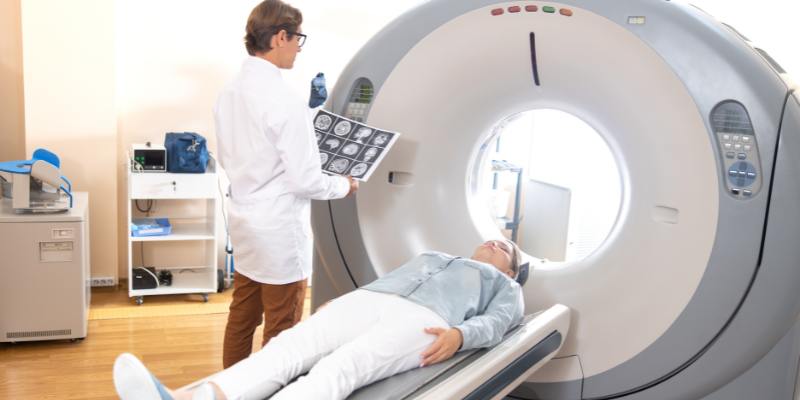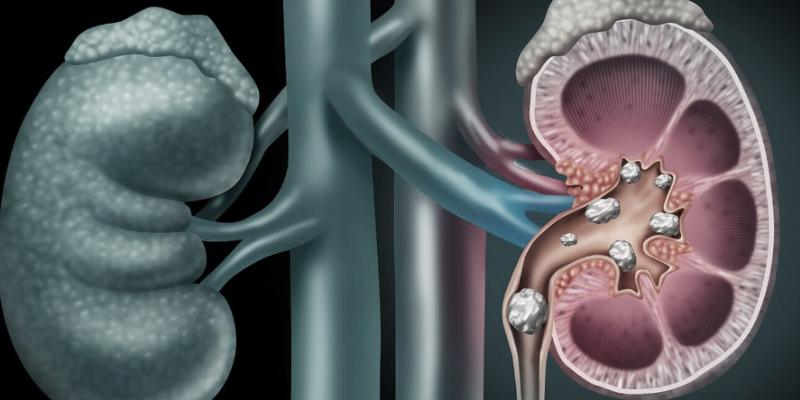Discover The Top Causes And Treatment Strategies For Ependymoma Syndrome
Ependymoma syndrome is a rare and complex condition that primarily affects the central nervous system. It is caused by a tumor that develops from ependymal cells, which line the ventricles of the brain and the spinal cord. While the exact cause of ependymoma is still not fully understood, recent advances in medical research have provided more clarity on its origin and treatment.
This article aims to explore the causes, symptoms, diagnosis, and most effective treatment options available to those diagnosed with ependymoma.
What is Ependymoma Syndrome?
Ependymoma is a rare form of tumor that originates from the ependymal cells in the brain or spinal cord. These cells line the ventricles of the brain and the central canal of the spinal cord. Ependymomas can develop in both children and adults, but they are more common in the pediatric population. This type of tumor can affect various parts of the brain and spinal cord, leading to a wide range of symptoms depending on its location.
Ependymomas are typically classified into four different grades, with grade I being the least aggressive and grade IV being the most malignant. The grade of the tumor plays a critical role in determining the prognosis and treatment options.
Causes of Ependymoma Syndrome:
The exact cause of ependymoma syndrome remains unknown, though several factors may contribute to its development. Here are some possible causes:
- Genetic Factors:
Certain genetic mutations are believed to increase the risk of developing ependymoma. For example, individuals with neurofibromatosis type II (NF2) have a higher likelihood of developing ependymomas.
- Previous Radiation Exposure:
Patients who have undergone radiation therapy to the head or spine may be at increased risk for developing ependymoma. Radiation can cause DNA damage, which might lead to tumor formation.
- Family History:
A family history of brain tumors may also increase the likelihood of developing an ependymoma. However, most cases of ependymoma occur without any known family history of the condition.
- Age and Gender:
Ependymomas are more common in children, although they can occur at any age. Men are slightly more likely to develop ependymoma than women.
Symptoms of Ependymoma Syndrome:
The symptoms of ependymoma vary depending on the tumor's location, size, and grade. Common symptoms include:
- Headaches: A common symptom of brain ependymomas, particularly in the morning. The pain is often caused by increased intracranial pressure due to the tumor's growth.

- Seizures: Tumors in the brain may cause seizures, which are often the first sign of a brain tumor in both children and adults.
- Neurological Deficits: Depending on the location of the tumor, patients may experience weakness, numbness, or loss of coordination. Tumors in the spinal cord can cause issues with movement and sensation in the limbs.
- Nausea and Vomiting: Increased pressure inside the skull due to a tumor can lead to nausea and vomiting, especially in the morning.
- Vision Problems: If the tumor affects the optic nerves or other parts of the visual system, it can lead to blurred vision or even vision loss.
- Cognitive and Behavioral Changes: In some cases, patients may experience changes in cognitive function or behavior, especially if the tumor is in the brain.
Diagnosis of Ependymoma Syndrome:
The diagnosis of ependymoma involves a series of medical tests and imaging techniques to confirm the presence of the tumor and determine its location and grade. The most common diagnostic procedures include:
- MRI (Magnetic Resonance Imaging):
MRI is the most effective imaging tool for detecting ependymomas. It provides detailed images of the brain and spinal cord, allowing doctors to identify tumors and assess their size and location.
- CT Scan (Computed Tomography):
In some cases, a CT scan may be used to detect ependymomas, although it is not as detailed as an MRI.

- Biopsy:
A biopsy involves taking a small sample of the tumor tissue for examination under a microscope. This is done to determine the tumor’s grade and cell type.
- Neurological Examination:
A thorough neurological examination is essential for assessing the patient's motor skills, reflexes, and cognitive function.
Treatment Options for Ependymoma Syndrome:
Treatment for ependymoma syndrome depends on various factors, including the tumor's size, location, and grade. The main treatment options for ependymoma include:
- Surgery: The primary treatment for ependymomas is surgical removal. The goal is to remove as much of the tumor as possible while preserving normal brain or spinal cord tissue. However, in some cases, complete removal may not be feasible due to the tumor's location.
- Radiation Therapy: After surgery, radiation therapy may be used to target any remaining tumor cells. This is particularly important for high-grade tumors or tumors that cannot be completely removed during surgery.
- Chemotherapy: Chemotherapy may be used in combination with surgery and radiation therapy, especially in cases of high-grade or recurrent ependymomas. Certain chemotherapy drugs are designed to target and kill tumor cells.
- Proton Beam Therapy: This is a more advanced form of radiation therapy that uses protons instead of X-rays. It may be used in cases where traditional radiation therapy is not practical or appropriate.
- Stem Cell Therapy: In some cases, stem cell therapy may be used as part of an experimental treatment plan, especially in cases of recurrent ependymomas.
- Targeted Therapy: Targeted therapies involve using drugs that specifically target the genetic mutations or proteins that allow tumor cells to grow and divide. Research is ongoing in this area for ependymomas.
- Clinical Trials: For patients with recurrent or inoperable ependymomas, clinical trials may provide access to experimental treatments.
Prognosis and Survival Rates for Ependymoma Syndrome:
The prognosis for ependymoma patients depends on several factors, including the tumor’s grade, location, and how much of it was successfully removed. Low-grade ependymomas tend to have a better prognosis than high-grade tumors. The survival rate for ependymoma patients is approximately 70-80% for low-grade tumors, with higher survival rates if the tumor is detected early and treated appropriately.
For high-grade or recurrent ependymomas, the survival rate is lower, and long-term monitoring is necessary to detect any recurrence.
Conclusion
Ependymoma syndrome is a rare and complex condition that requires timely diagnosis and comprehensive treatment. While the exact causes are not fully understood, there are effective treatment strategies that can significantly improve outcomes, including surgery, radiation therapy, and chemotherapy.
If you or a loved one has been diagnosed with ependymoma, consult with a specialized healthcare provider to explore the best treatment options and determine the most suitable plan for your case.











